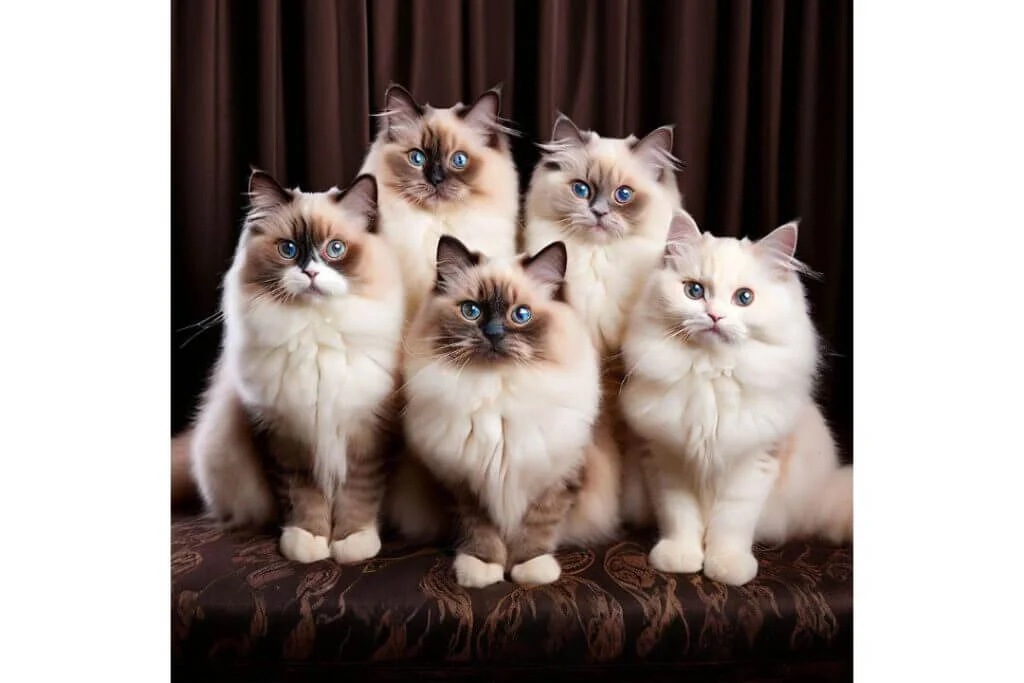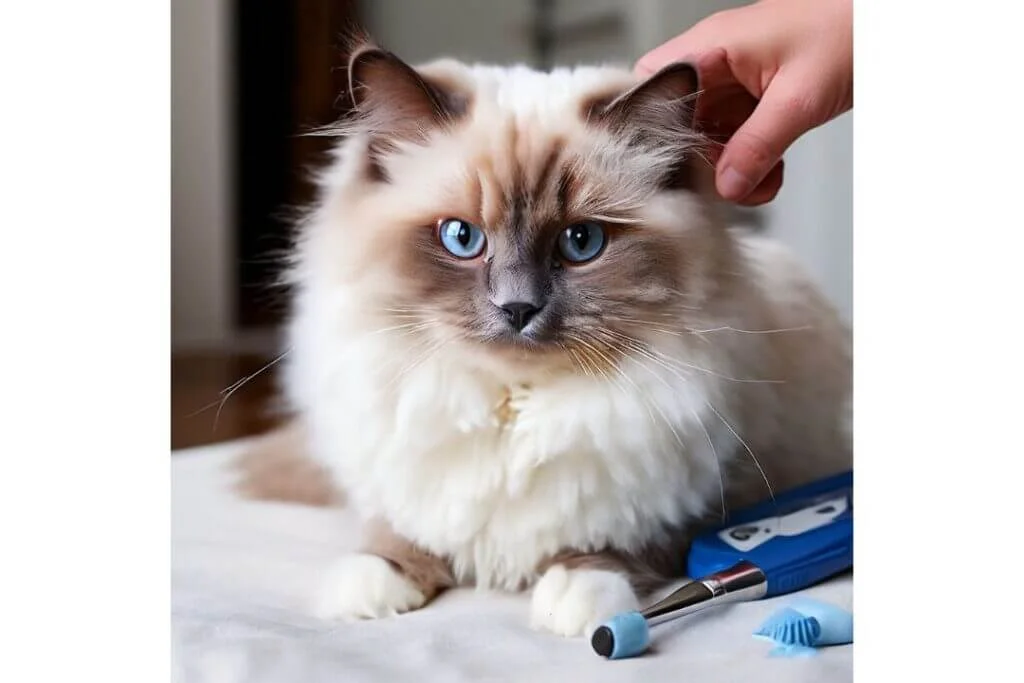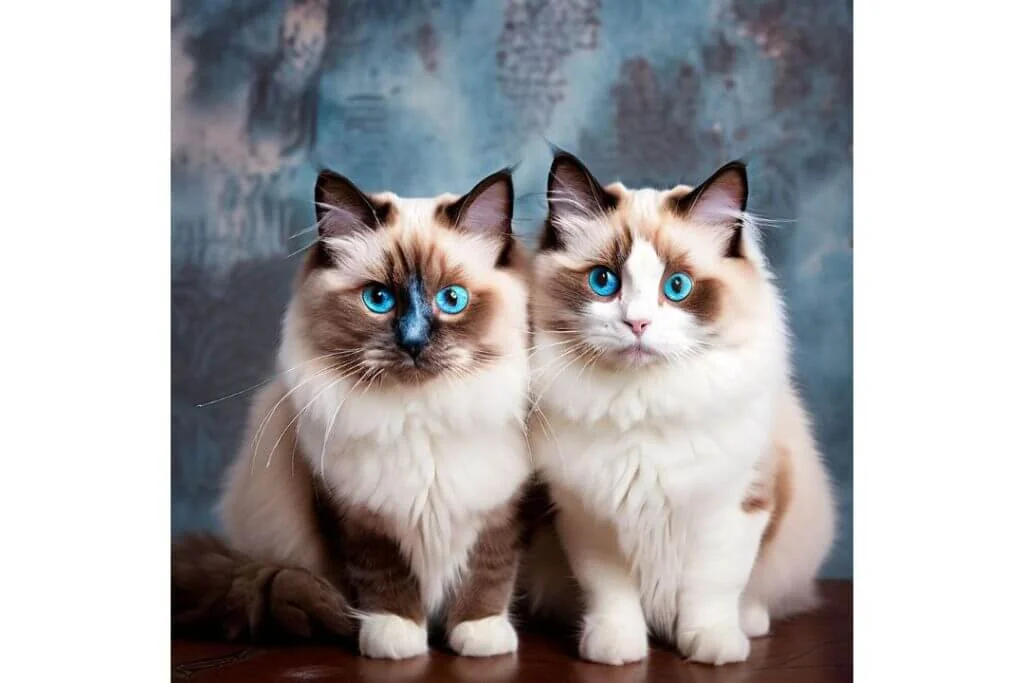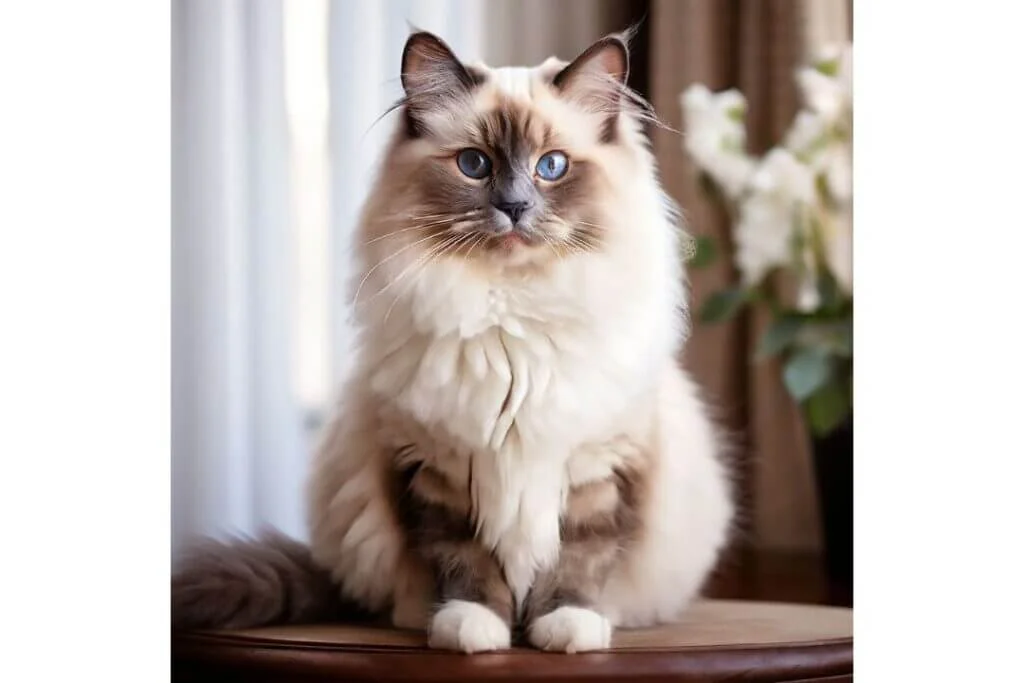Introduction
Ragdoll cats are among the most beloved feline breeds, known for their striking appearance and affectionate nature. One of the most commonly asked questions about Ragdoll cats is whether they have blue eyes. This article delves into the intriguing world of Ragdoll cats, exploring their history, physical characteristics, genetics, and the truth Do Ragdoll Cats Have Blue Eyes?
History of Ragdoll Cats
Origin and Development
The Ragdoll cat breed originated in the 1960s in California, developed by a breeder named Ann Baker. She started with a domestic long-haired white cat named Josephine, and through selective breeding, she created the Ragdoll breed. Baker’s goal was to develop a cat with a docile temperament, plush fur, and striking blue eyes.
Characteristics and Traits
Ragdoll cats are known for their large size, silky fur, and placid demeanor. They are often referred to as “puppy-like” because of their tendency to follow their owners around and their gentle, laid-back nature. Their unique combination of physical and behavioral traits makes them highly sought after as pets.
Physical Appearance of Ragdoll Cats
General Appearance

Ragdolls are large, muscular cats with semi-longhair coats. They come in various colors and patterns, including colorpoint, mitted, and bicolor. Their plush, silky fur and distinctive markings contribute to their allure.
Eye Color Variations
While blue eyes are a hallmark of the breed, not all Ragdoll cats have them. The eye color can range depending on genetic factors and individual variation. This raises the question: do Ragdoll cats inherently have blue eyes?
Do Ragdoll Cats Have Blue Eyes?
Genetic Factors
The blue eyes seen in many Ragdoll cats are primarily due to genetic factors. The breed standard for Ragdolls specifies blue eyes, especially in colorpoint and bicolor patterns. The intensity and shade of blue can vary, but the majority of purebred Ragdolls do possess blue eyes.
The Blue Eye Phenomenon
The blue eye color in Ragdolls results from the lack of pigment in the iris, which reflects light and creates the blue appearance. This is similar to what is observed in other animals with blue eyes, such as certain dog breeds and even humans.
Genetics Behind Blue Eyes in Ragdoll Cats
The Role of the Blue-Eyed White (BEW) Gene
The Blue-Eyed White (BEW) gene is one of the primary genetic components responsible for blue eyes in Ragdoll cats. This gene influences the pigmentation in the eyes, leading to the characteristic blue color. However, it is not the sole factor; other genetic elements also play a role.
Other Contributing Genes
Besides the BEW gene, other genes can affect eye color. The interaction between these genes determines the final eye color in a Ragdoll cat. Thus, while blue is common, other variations can occur depending on the genetic makeup of the individual cat.
Variations in Eye Color Among Ragdoll Cats
Common Eye Colors

Blue is the most common eye color in Ragdoll cats, particularly among those with colorpoint and bicolor patterns. These cats typically have bright, vivid blue eyes that are highly sought after.
Rare Eye Colors
In some rare cases, Ragdoll cats may have other eye colors, such as green or gold. These instances are less common and often occur due to specific genetic combinations that deviate from the typical Ragdoll standards.
Are All Ragdoll Kittens Born with Blue Eyes?
Eye Color Development in Kittens
All Ragdoll kittens are born with blue eyes. This initial blue color is due to the lack of melanin in their eyes at birth. As the kittens grow, the melanin production increases, potentially changing their eye color.
Changes Over Time
While many Ragdoll kittens maintain their blue eye color into adulthood, some may experience a shift in hue as they mature. This change usually occurs within the first few months of life as their genetic traits fully express themselves.
Health Implications of Blue Eyes in Ragdoll Cats
Vision and Eye Health
Generally, blue eyes in Ragdoll cats do not pose significant health risks. However, like all cats, they can be prone to certain eye conditions, such as cataracts or retinal issues. Regular veterinary check-ups are essential to monitor and maintain eye health.
Genetic Health Concerns
While the blue eye gene itself does not cause health problems, it is crucial to ensure that breeding practices are ethical and do not compromise the overall health of the cats. Poor breeding practices can lead to genetic disorders that affect not only eye color but other aspects of health.
Breeding Ragdoll Cats for Blue Eyes
Ethical Considerations
Breeding Ragdoll cats to maintain blue eyes should always be done ethically. This means prioritizing the health and well-being of the cats over aesthetic traits. Responsible breeders avoid inbreeding and ensure that their cats are healthy and well-cared for.
Best Practices in Breeding
To achieve the desired blue eyes while maintaining health standards, breeders should conduct genetic testing and follow best practices. This includes understanding the genetic background of their cats and avoiding breeding practices that could lead to health issues.
Caring for Ragdoll Cats with Blue Eyes
Eye Care Tips

Ragdoll cats with blue eyes require regular eye care to keep them healthy. This includes wiping their eyes gently to remove any discharge and monitoring for signs of irritation or infection. Using products recommended by veterinarians can help maintain their eye health.
General Health and Grooming
In addition to eye care, Ragdoll cats benefit from regular grooming to keep their fur in good condition. Brushing their coat several times a week can help prevent matting and reduce shedding. Regular veterinary visits are also essential to monitor their overall health.
Shaving a Ragdoll Cat: A Comprehensive Guide In 2024
10 Bad Things About Ragdoll Cats
Ragamuffin vs Ragdoll: A Detailed Comparison
Personality and Temperament of Ragdoll Cats
Typical Behavior Traits
Ragdoll cats are known for their calm and affectionate nature. They enjoy being held and are often compared to floppy dolls due to their tendency to relax completely when picked up. This docile demeanor makes them ideal pets for families and individuals alike.
Interaction with Humans and Other Pets
Ragdolls are social cats that thrive on human interaction. They are known to be gentle with children and can get along well with other pets, including dogs like golden retreivers etc. Their friendly and adaptable nature makes them easy to integrate into various household settings.
Ragdoll Cats in Popular Culture
Famous Ragdoll Cats
Several Ragdoll cats have gained fame due to their striking appearance and endearing personalities. These famous Ragdolls often appear in social media, advertisements, and even as mascots for various brands.
Media Appearances
Ragdoll cats have also made appearances in movies, TV shows, and books. Their unique looks and charming behavior make them a favorite among pet owners and viewers alike.
Common Myths About Ragdoll Cats
Debunking Eye Color Myths

One common myth is that all Ragdoll cats have blue eyes, which is not entirely true. While blue eyes are prevalent, some Ragdolls can have other eye colors. Understanding the genetics behind eye color can help dispel this myth.
Other Misconceptions
Other myths include the belief that Ragdolls are hypoallergenic or that they do not shed. While they may produce fewer allergens than some breeds, no cat is completely hypoallergenic. Additionally, Ragdolls do shed, and regular grooming is necessary to manage their fur.
Adopting a Ragdoll Cat
Finding a Reputable Breeder
When looking to adopt a Ragdoll cat, it is crucial to find a reputable breeder. This ensures that the cat you are adopting is healthy and well-cared for. Reputable breeders will provide health clearances and will be knowledgeable about the breed.
Adoption vs. Purchase
Adopting from a rescue organization or shelter is another excellent option. Many Ragdoll cats need loving homes, and adoption can be a rewarding experience. Whether you choose to adopt or purchase, ensuring that the cat comes from a good environment is key.
Conclusion

Ragdoll cats are a delightful breed known for their affectionate nature and striking blue eyes. While not all Ragdolls have blue eyes, those that do are a testament to the fascinating genetics behind this feature. Understanding the care needs and ethical considerations of breeding these cats is essential for maintaining their health and well-being. Whether you are a current Ragdoll owner or considering adopting one, appreciating the unique qualities of these cats will enhance your experience as a pet parent.
FAQs
Do all Ragdoll cats have blue eyes? No, not all Ragdoll cats have blue eyes. While blue is the most common eye color, some Ragdolls can have different eye colors due to their genetic makeup.
Can Ragdoll cats’ eye color change over time? Yes, Ragdoll kittens are born with blue eyes, but their eye color can change as they mature, usually within the first few months of life.
Are blue eyes in Ragdoll cats linked to deafness? Blue eyes in Ragdoll cats are not typically linked to deafness. However, in some other breeds, blue eyes can be associated with congenital deafness.
How can I ensure my Ragdoll cat has blue eyes? To increase the likelihood of your Ragdoll cat having blue eyes, it is essential to choose a cat from a reputable breeder who understands the genetics behind eye color.
What are the best ways to care for a Ragdoll cat’s eyes? Regularly wiping their eyes to remove discharge, monitoring for signs of irritation or infection, and using veterinarian-recommended eye care products can help maintain the health of a Ragdoll cat’s eyes.

